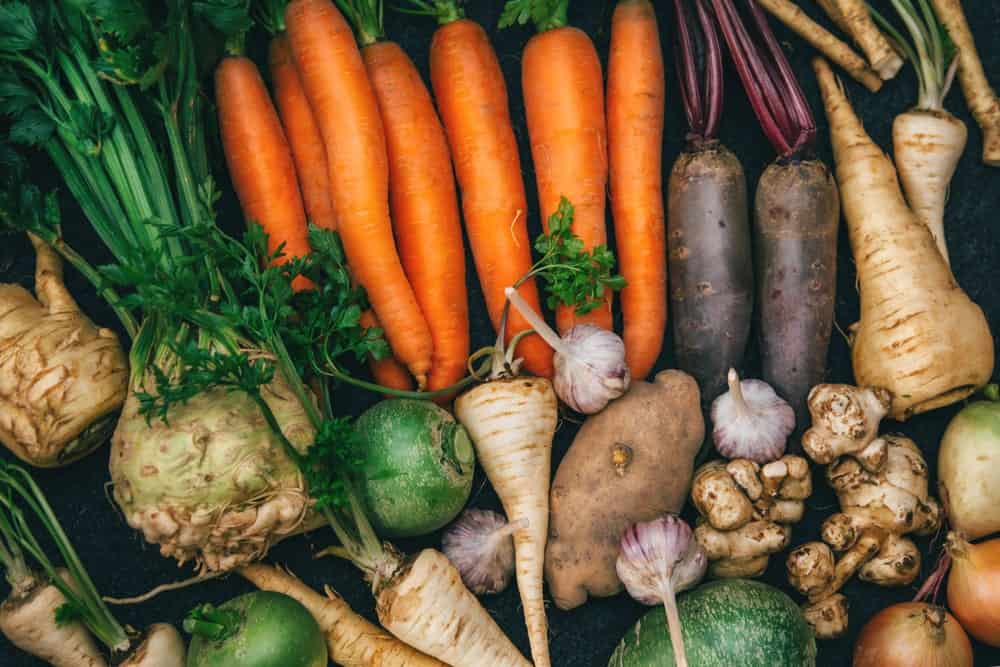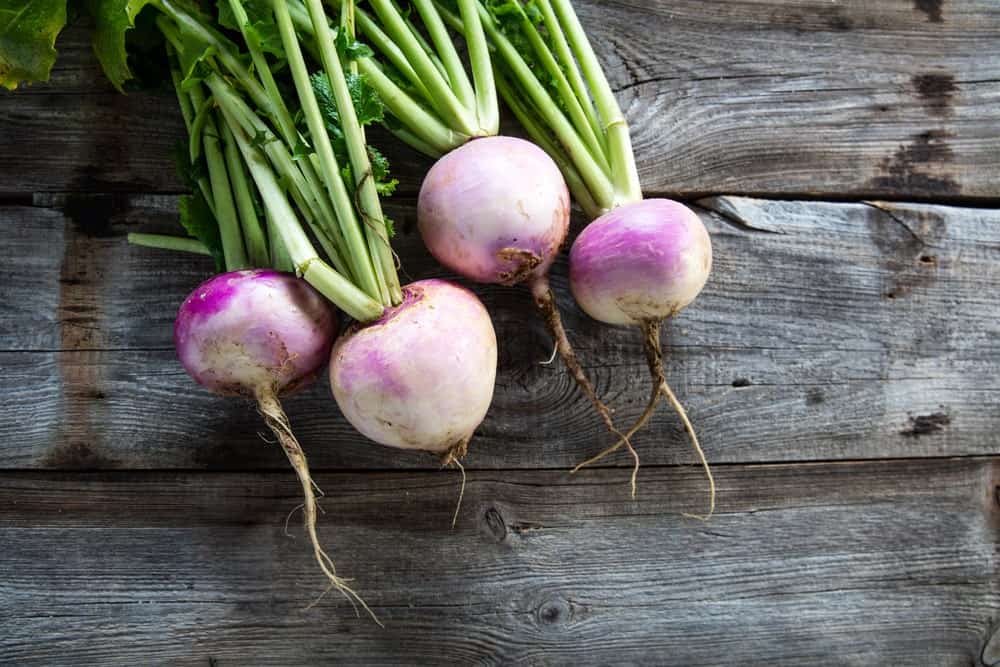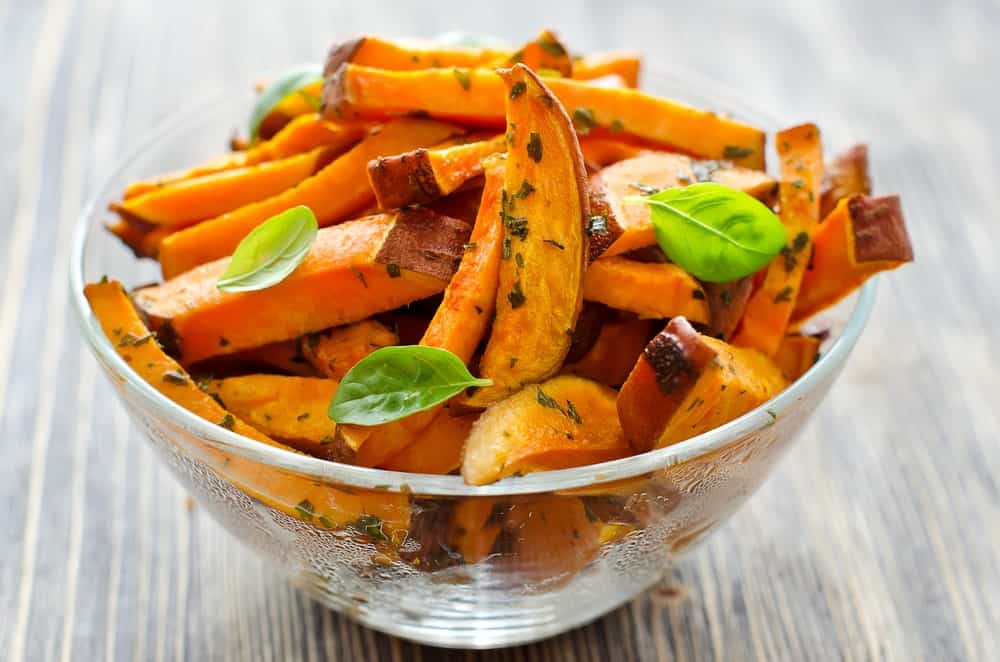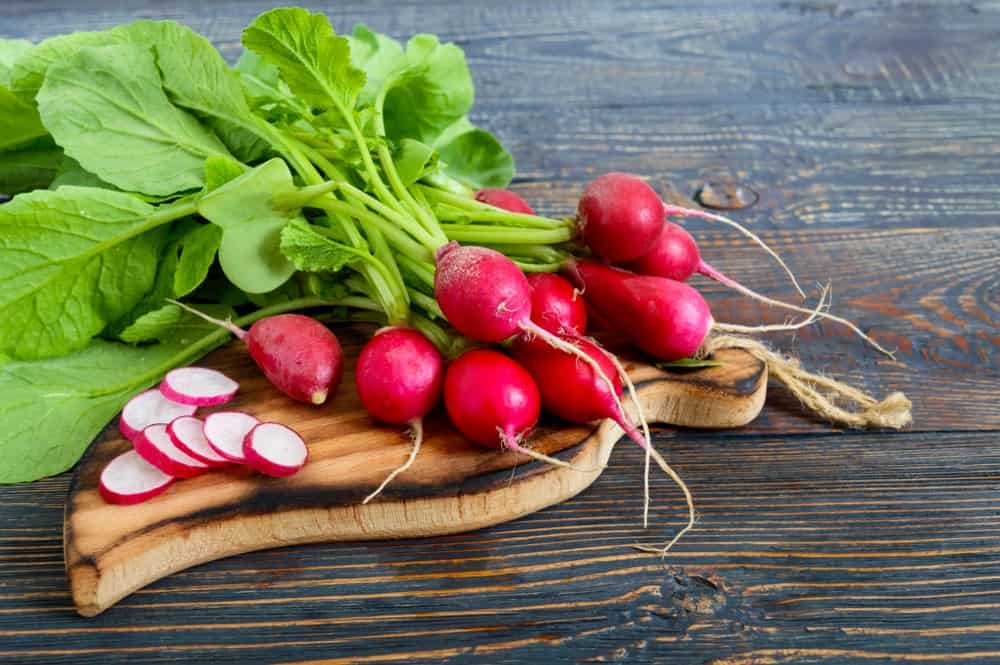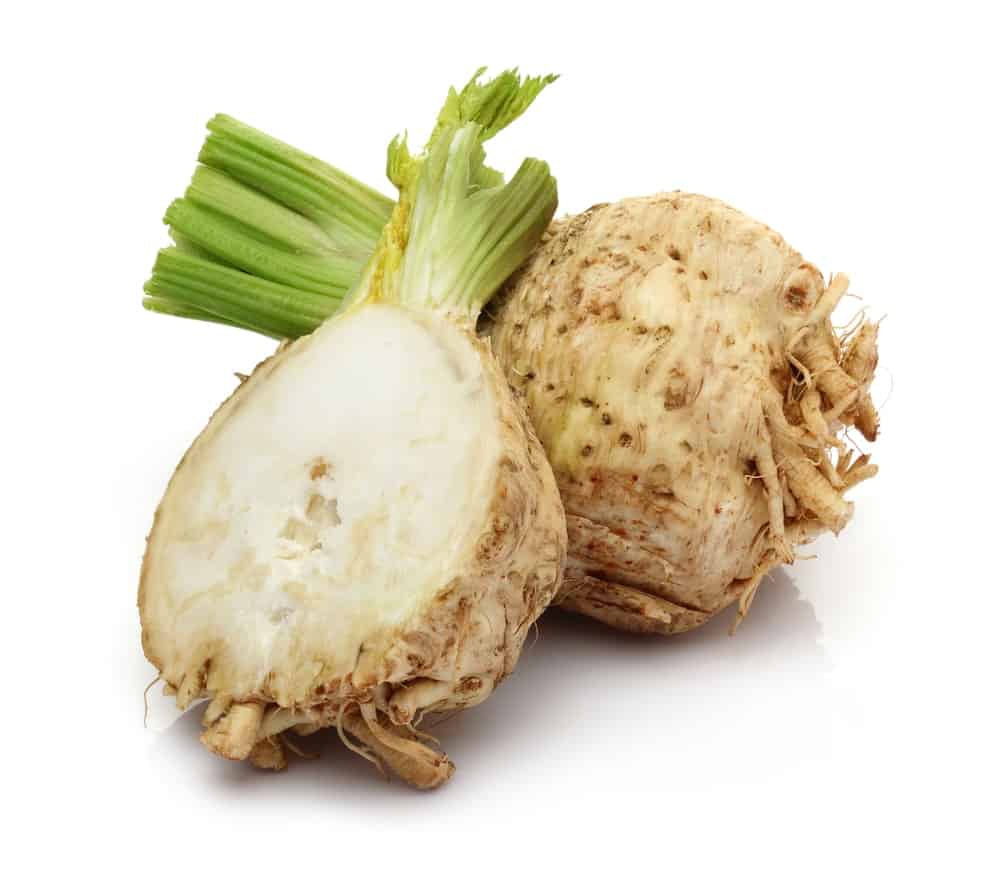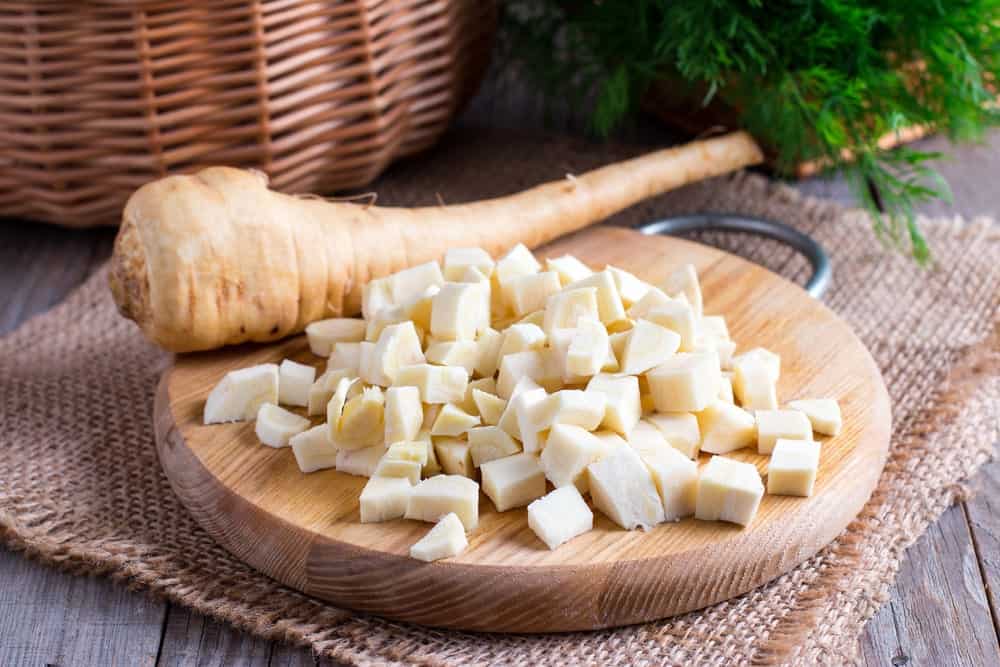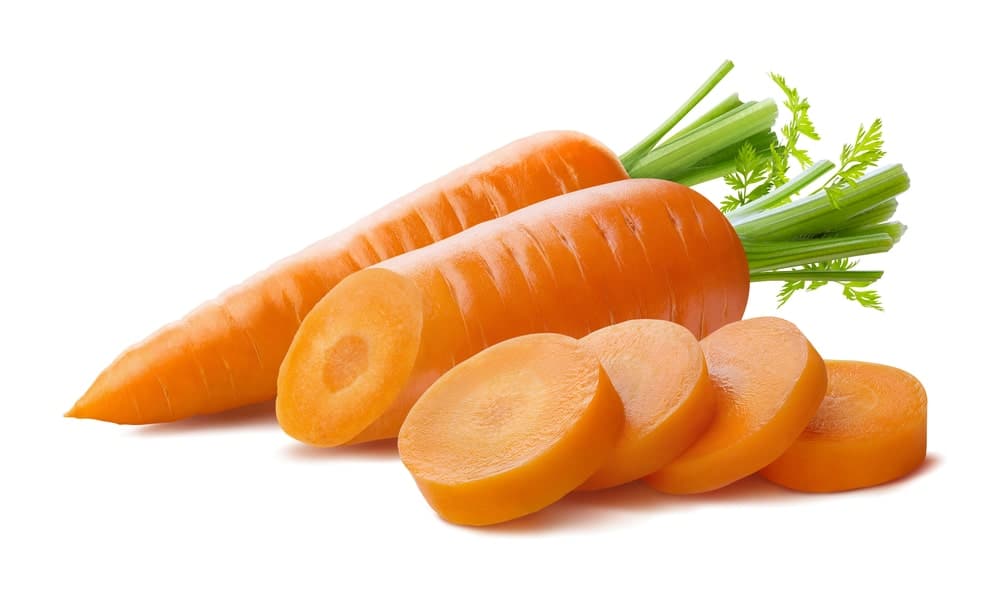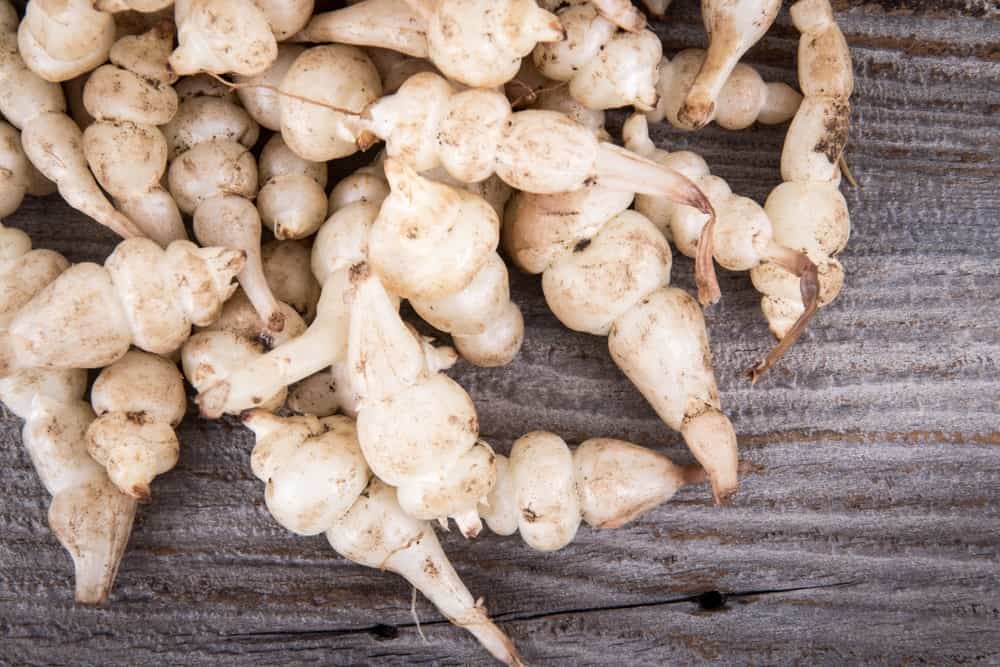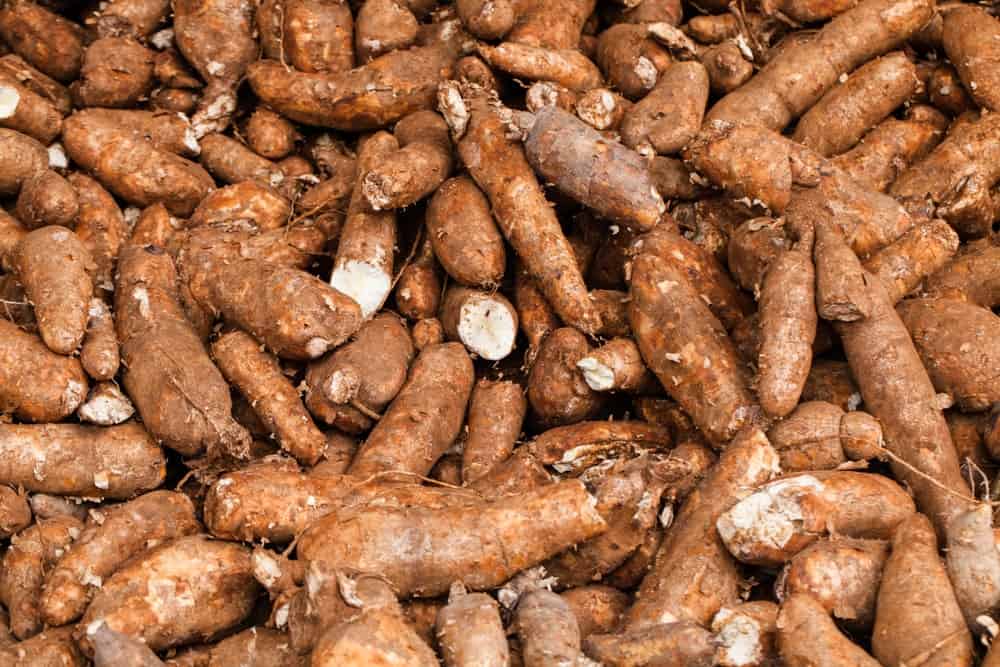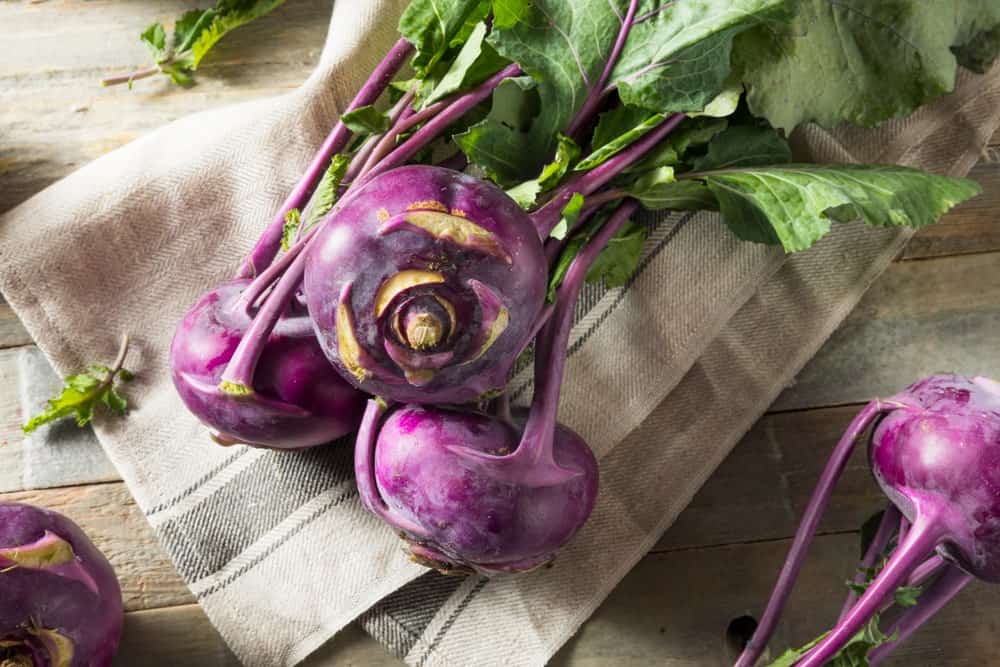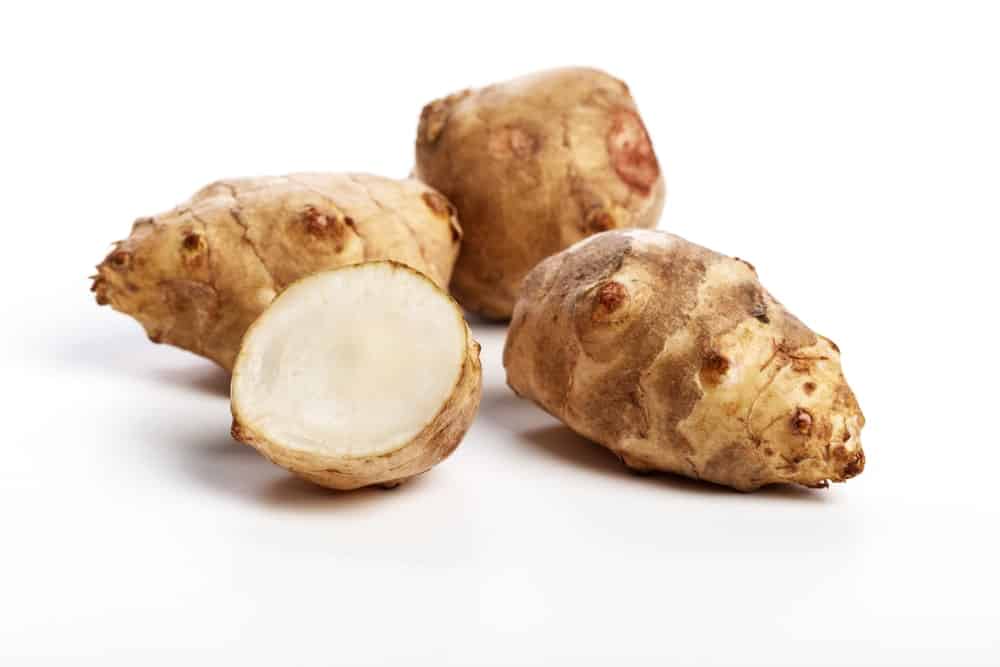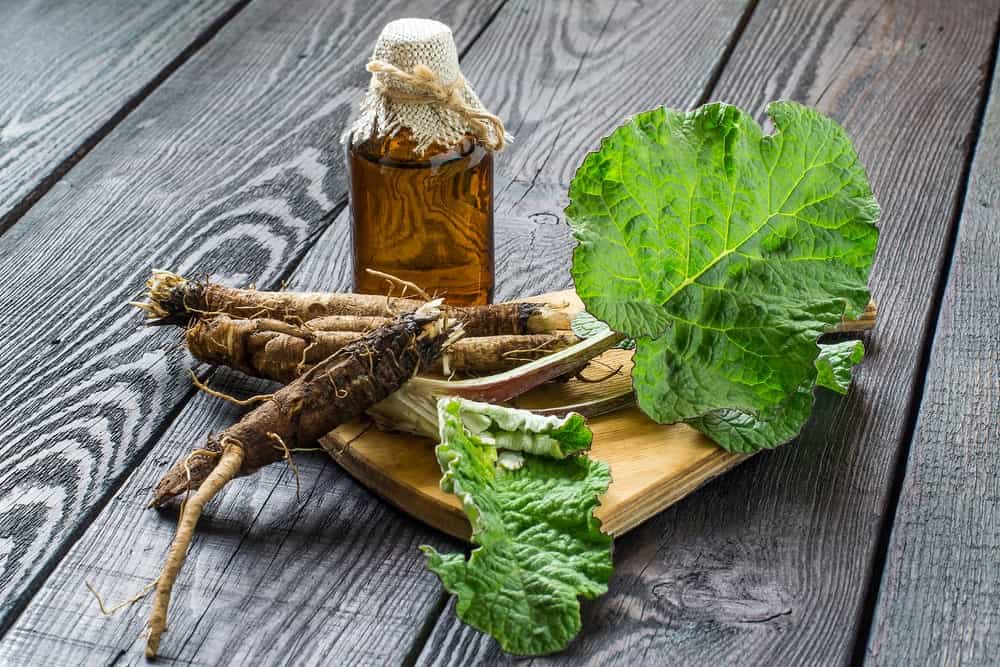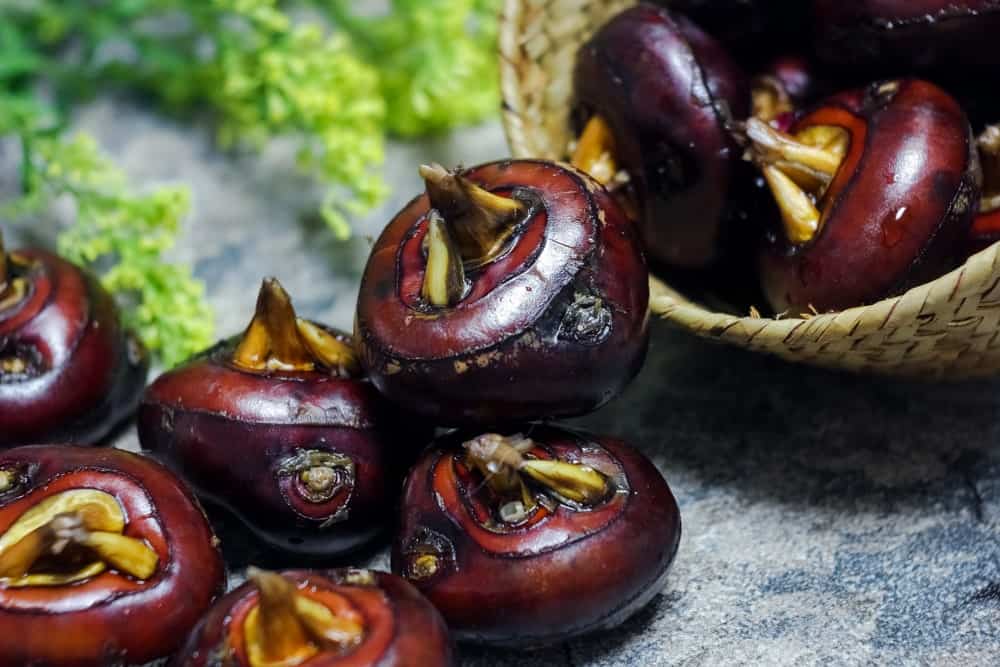As the name suggests, root vegetables are edible plants that grow underground. The root is an essential organ of these veggies as it helps store energy. This energy exists in the form of carbohydrates, minerals, proteins, and vitamins and is one of the major reasons why so many root vegetables are consumed by humans. Keep reading to learn all about the different types of root vegetables.
Many people do not find root crops appealing, given their unimpressive growth process mostly occurs underground. That said, root crops are crisp, vibrant, and nourishing vegetables, with their top and roots being super flavorsome. It is also interesting to note that they have been enjoyed by the rich and noble from the beginning. The early civilizations of Mediterranean Asia, Africa, Europe, and South America cultivated their own root vegetables in their gardens and backyards.
Even before they learned to produce their own underground plants, they scoured for these healthy veggies in the wild. The fact that these plants have been popular for more than 5000 years speaks volumes about their significance in one’s diet.
This blog post has shed light upon different types of root vegetables, their health benefits, and other important facts that every reader must know about.
14 Different Types of Root Vegetables
1. Turnips
Also known as white turnips, turnips belong to the mustard family (Brassicaceae) and originated in Middle and Eastern Asia. The turnip is a fast-growing plant that grows best in cool seasons. Therefore, the crops are sown in late summer or early spring, growing rapidly before the hot summer months.
Both young and mature turnips are useful as they are consumed raw in both pickles and salads. The young leaves can also be cooked and mixed in various dishes, such as mashed potatoes and stews.
Turnips are one of the most flavor-packed vegetables cultivated for centuries. They are eaten raw or cooked worldwide due to their excellent nutrient profile. High in vitamin C, these cruciferous veggies help boost the immune system and keep respiratory infections at bay. Studies also show that regular consumption of these nutritious plants decreases the risk of various cancers related to stomach, breast, lung, or colorectal cancers.
You can replace this vegetable with turnips if you are short of potatoes. Consider making turnip fries, salad, or coleslaw.
2. Sweet Potatoes
Belonging to the bindweed or morning glory family (Convolvulaceae), sweet potatoes are slightly sweet and starchy veggies. Due to their soft, orange appearance, sweet potatoes are sometimes called “yams” in various parts of North America. However, these root veggies are very different from the botanical yam – native to Asia and Africa and are part of the monocot family. A distant relative of potatoes, sweet potatoes’ young leaves and shoots are often eaten as healthy greens.
They are another type of flavorful root vegetable chocked full of health benefits. These root veggies are highly rich in fiber, manganese, vitamins (A and C), and various antioxidants. (beta-carotene, anthocyanins, chlorogenic acid, etc.)
Three studies concluded that 4 grams of white sweet potato extract every day for about 2 months help improve blood sugar levels among diabetic patients. Owing to their high vitamin A content, a few studies recommend that this root vegetable may also keep the immune system intact, supporting skin health and protecting against vision problems.
3. Radishes
This edible root vegetable, belonging to the Brassicaceae family, is popularly used in salads for a crunchy bite and aesthetic appeal. Out of all the root veggies, radishes are easy to plant and grow out of all the root veggies, which is why they are the first choice for novice vegetable cultivators. The skin color of their roots widely ranges from white to pink, red to green, and yellow to purple to black. The roots obtain these different hues from the process of anthocyanins. However, the flesh tends to be usually white.
While radishes are cultivated to make the most of their unique flavor and nutrients, they are sometimes also grown for oil extraction. Besides these incredible properties, radishes are super healthy as well. First, radishes are packed with dietary fiber, which helps treat digestion problems. They also serve as a natural cure for treating the common cold and cough in winter.
Since they are full of vitamins A, C, E, potassium, and other minerals, radishes also support the immune system. These root vegetables also keep blood pressure in control by maintaining the level of sodium-potassium in the body.
4. Celeriac
Also known as the turnip-rooted celery, knob celery, or celery root, celeriac is a type of celery grown for its edible stem and shoots. First originating in the Mediterranean Basin, celeriac is commonly cultivated in the Mediterranean Basin and Northern Europe. Siberia, North Africa, North America, and Southwest Asia are other regions where it is grown.
Celery root is consumed raw and cooked; in today’s day and age, the root veggie is used more in its raw form due to its high flavor and increased tenderness. Celeriac is enjoyed in many ways, like roasting, stewing, blanching, or mashing the organic product. Some prefer to have it sautéed in olive oil and mix it in savory dishes. The flavorsome leaves and stems can also be added to soups and casseroles.
Celeriac offers plenty of health benefits since it is the powerhouse of various nutrients (vitamins, minerals, antioxidants). For example, antioxidants present in celeriac fight against free radicals, preventing them from affecting body cells. Doing so keeps the body from various conditions such as cancer, heart disease, Alzheimer’s, etc.
5. Parsnips
Scientifically known as Pastinaca sativa, parsnips are a root vegetable closely related to parsley and carrot as they belong to the Apiaceae family. They tend to grow into cream-toned skin and flesh with long roots. The lovely vegetable develops a sweet flavor when left to mature properly in winter.
Native to Eurasia and originally cultivated by the Romans, the biennial plant is eaten raw and cooked for its amazing nutrients, such as minerals, vitamins, antioxidants, and soluble and insoluble dietary fiber. It is generally believed that eating water-rich food helps control weight. And studies show that parsnip contains about 79.5% of water content, which is why this vegetable is considered an effective product for a healthy weight loss diet. In addition to aiding weight loss, parsnips also help reduce cholesterol levels, blood pressure, and inflammation in the body.
Like carrots, parsnips have a sweet flavor with a nutty and earthy undertone, making them versatile enough to be used in various dishes such as parsnip hash brown, parsnip, and cauliflower soup, salted caramel parsnips, roasted parsnips, and chestnut salads.
6. Carrots
Carrots are one of the most popular and common root vegetables that occur mostly in orange shade; however, carrots in red, black, white, purple, or yellow color also exist. The carrot is a domesticated version of the wild carrot – Daucus carota – native to Europe and Southwestern Asia. It is widely believed that this biennial plant was first cultivated in Persia for its tasty leaves and nutritious seeds.
Did you know that carrots weren’t introduced to American cuisine until World War I? Only after the war did the soldiers bring back the seeds of this wonderful root veggie and include them in various sweet and savory dishes. Today, carrots are also enjoyed in the form of a healthy drink as they offer a broad variety of benefits.
Carrots offer a number of plant compounds, such as carotenoids. These substances support the immune system and protect against heart disease, cancer, and degenerative problems. Some other essential compounds in carrots include Alpha-carotene, beta-carotene, lutein, lycopene, anthocyanins, and polyacetylenes. Eating carrots in large quantities can help lower blood cholesterol, aid weight loss, and improve eye health.
7. Lotus Root
Also known as lotus stem, lotus root is a renowned vegetable native to India and China. It is most popularly used in Indian, Chinese, and Japanese cuisines. The veggie has a crunchy and sweet flavor, resembling water chestnut.
The admirable quality of this vegetable is that all its parts, including the root, seeds, and young flower stalks, are edible. The stem boasts green color with a whitish body. And it can be stored for about a week in the refrigerator. Commonly, the lotus root is enjoyed in salads. In many cultures, including American culture, it is mixed with pork and prawns for a delectable taste. The louts stem curry is one of the most famous dishes with the lotus stem as the main ingredient. It is prepared by stir-frying the stems. The curry is best paired with rice or a bun.
Lotus stem is an amazing source of dietary fiber, copper, zinc, magnesium, manganese, and vitamin C. These healthy nutrients intensify the body’s production of red blood cells and keep the immune system strong.
8. Crosne
Crosne is known by many names, such as Stachys affinis, Chinese artichoke, knot root, or artichoke betony. This perennial herbaceous plant originated in China or Japan and is savored in many forms – raw, dried, cooked, or pickled.
What makes this root vegetable distinguishable is its unusual worm-like shape. Boasting a brownish-white surface, crosne is one of the Asian members of the mint family – Labiatae. Harvesting crosnes is super tedious as doing so requires several hours on hand. It is also the job of professional gardeners as amateurs may not be aware of proper tactics to harvest this edible root veggie.
Before crosnes are put to use, they must be scrubbed well. Peeling is optional. Ensure not to expose them to natural or artificial light; the tubers tend to darken in light and lose their natural flavor. It can be cooked as a side dish, sauté crosnes with butter, garlic, and sliced sunchokes. Add in Italian pepper and cook until tender. Toss in fresh rigatoni pasta and cheese. And tada!
You can also prepare yummy Chinese artichoke soup to warm your winter season. For that, you will need to cook crosnes with stock and add in freshly cut potatoes. Let it cook on medium heat until tender. And then wrap it up by mixing in cream and cognac.
Remember that crosne is high in sugar and is often classified as a carbohydrate. Hence, it is unhealthy for diabetic patients, and they should avoid eating Chinese artichokes altogether.
9. Cassava
Commonly known as manioc or yuca, cassava is a starchy tuber that belongs to the spurge family (Euphorbiaceae). Originating from the South American forests, manioc is a traditional vegetable in many regions of the world, including Asia, Africa, and South America. It is a vital food supplement for many inhabitants of these areas, along with other starch-based foods like taro, yam, and potato.
This perennial plant is full of calories, twice that of potatoes. Hence, it tops the list of high-calorie food. People looking forward to gaining weight must consider having manioc daily in their meals. Compared to potatoes and yams, cassava tends to have more protein. Yuca leaves should be eaten raw for a rich source of dietary proteins and vitamin K. This will help strengthen bones and stimulate cell activities.
Cassava is also packed with minerals like copper, iron, zinc, magnesium, and manganese. This root vegetable also has a B-complex group of vitamins like thiamin, folates, pyridoxine, riboflavin, and pantothenic acid. All in all, manioc has an excellent nutrient profile which everyone should take advantage of.
10. Kohlrabi
Also called German turnip, Kohlrabi is a wild cabbage that is the same species as cauliflower, broccoli, cabbage, kale, or collard greens. This biennial vegetable is bulbous with layers of leaves attached to it like it is in a cabbage.
Every part of kohlrabi is edible and can be eaten sautéed, steamed, roasted, creamed, or stuffed. Kohlrabi in smaller sizes is sweeter in taste. But as it matures, it develops a flavor similar to that of radish. Opting for recently harvested kohlrabi is always ideal as it possesses fresh and stiff leaves.
While kohlrabi can be enjoyed in plenty of ways, the nutrition facts that it has been no less. One of the biggest health benefits of kohlrabi is that it improves digestion. It contains oodles of dietary fiber that reduce cramp pain, improve the gastrointestinal system, and treat bloating and constipation. Kohlrabi also helps boost energy levels, regulates blood pressure, and improves bone strength. This is a healthier version of cabbage and can be eaten by all people as it isn’t a source of allergens.
11. Turmeric
Belonging to the ginger family, turmeric is one of the most effective root vegetables, ideal for both body and brain. While turmeric’s exact origination is unknown, it is widely believed to have originated in Southeast Asia.
For over a thousand years, this flowering plant is a major component of many Asian and Chinese medicines such as Ayurveda, Siddha, and Unani. It is also an essential flavoring agent in a number of Asian cuisines, especially curries to which the veggie gives a vibrant yellow color.
Turmeric tends to have a bitter, mustard-like taste which is overpowering if eaten raw. People prefer mixing it with other ingredients to compensate for its overbearing flavor. Turmeric tends to offer a wide range of health benefits; it helps prevent and perhaps treat cancer symptoms, lowers the risk of heart disease, prevents Alzheimer’s disease, and also helps cure depression to some extent.
12. Jerusalem Artichokes
Also known as sunchoke, sunroot, and earth apple, the Jerusalem artichoke is a sunflower species native to central North America. In most parts of France, vegetables are used as stock feed. However, in America, it is not as commonly used; small quantities of vegetables are used to prepare relishes, pickles, and side dishes.
Despite its name, this veggie is not related to Jerusalem and is also not a type of artichoke. However, both of them are distant members of the daisy family. How the plant got “Jerusalem” as its first name is uncertain. It is suggested that Italian settlers in the United States called this plant “Girasole,” which means sunflower in English. Over time, the name changed to Jerusalem from Girasole because of the familiar pronunciation.
Jerusalem artichokes are high in nutrients like iron, fiber, potassium, niacin, thiamine, and copper.
13. Arctium Lappa
Commonly known as greater burdock, Arctium lappa is a Eurasian species of plant in the Aster family. The plant is cultivated in gardens for the purpose of using its edible root, which is known to be a type of vegetable. Besides, as a type of food, the plant’s leaves, roots, and seeds are used as medicine.
Many people consume burdock to kill germs, treat fever, purify the blood, and increase urine flow. Burdock is also used in many OTC creams to treat skin wrinkles, acne, eczema, psoriasis, and ichthyosis. Budrock roots are commonly found in Japanese supermarkets, where it is popularly known as “gobo.” On the other hand, in the United States, Arctium lappa can only be found in a few selected vegetable markets or in special herb shops.
14. Water Chestnut
Also known as the Chinese water chestnut, water chestnut is native to Asia, China, India, Japan, the Philippines, and Australia. Many people mistake this aquatic vegetable for a nut. But the truth is it is not a nut at all. The root vegetable is grown in the mud, marshes, lakes, and sea. Plus, it is slightly crunchy, sweet, and nutritious.

